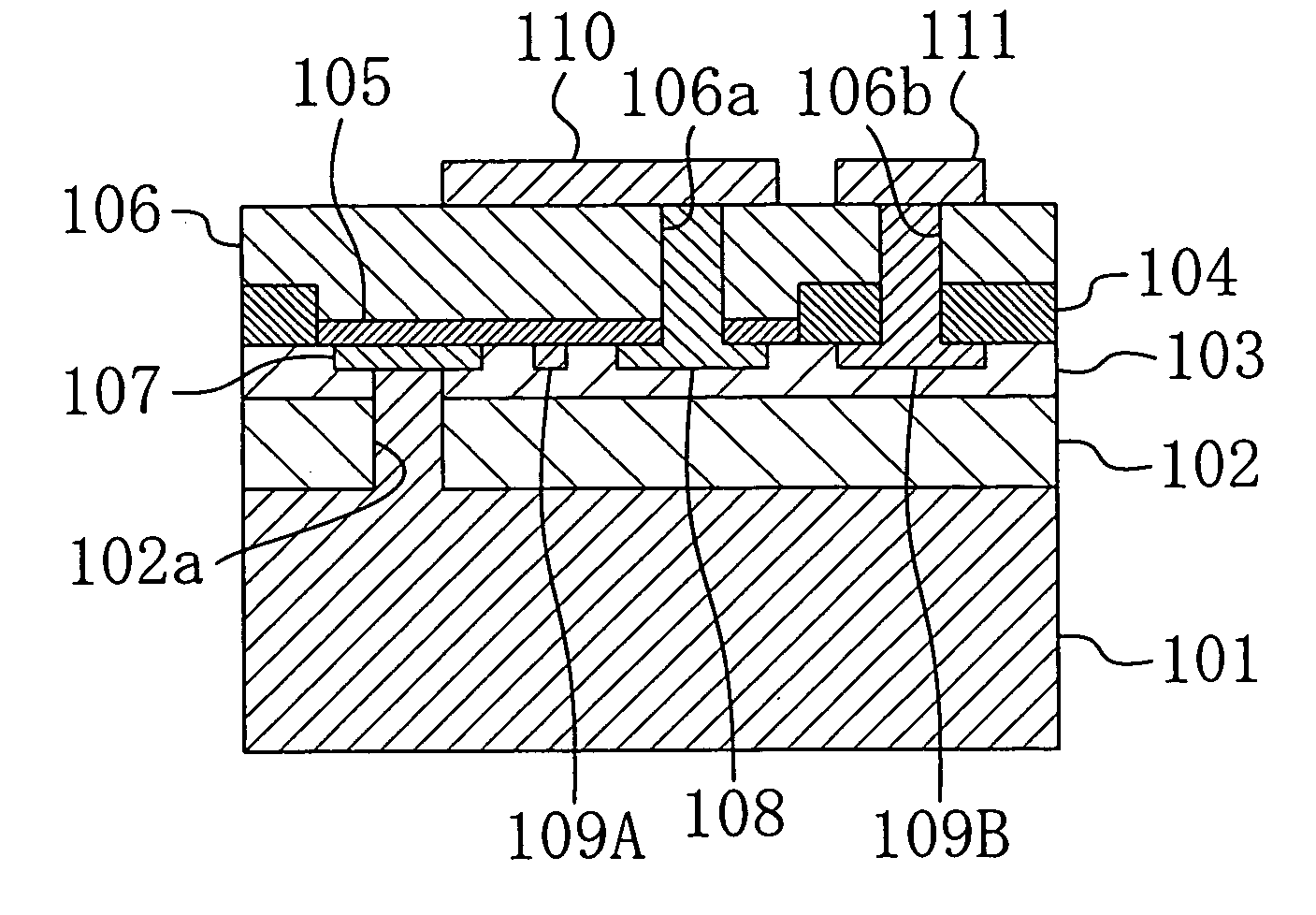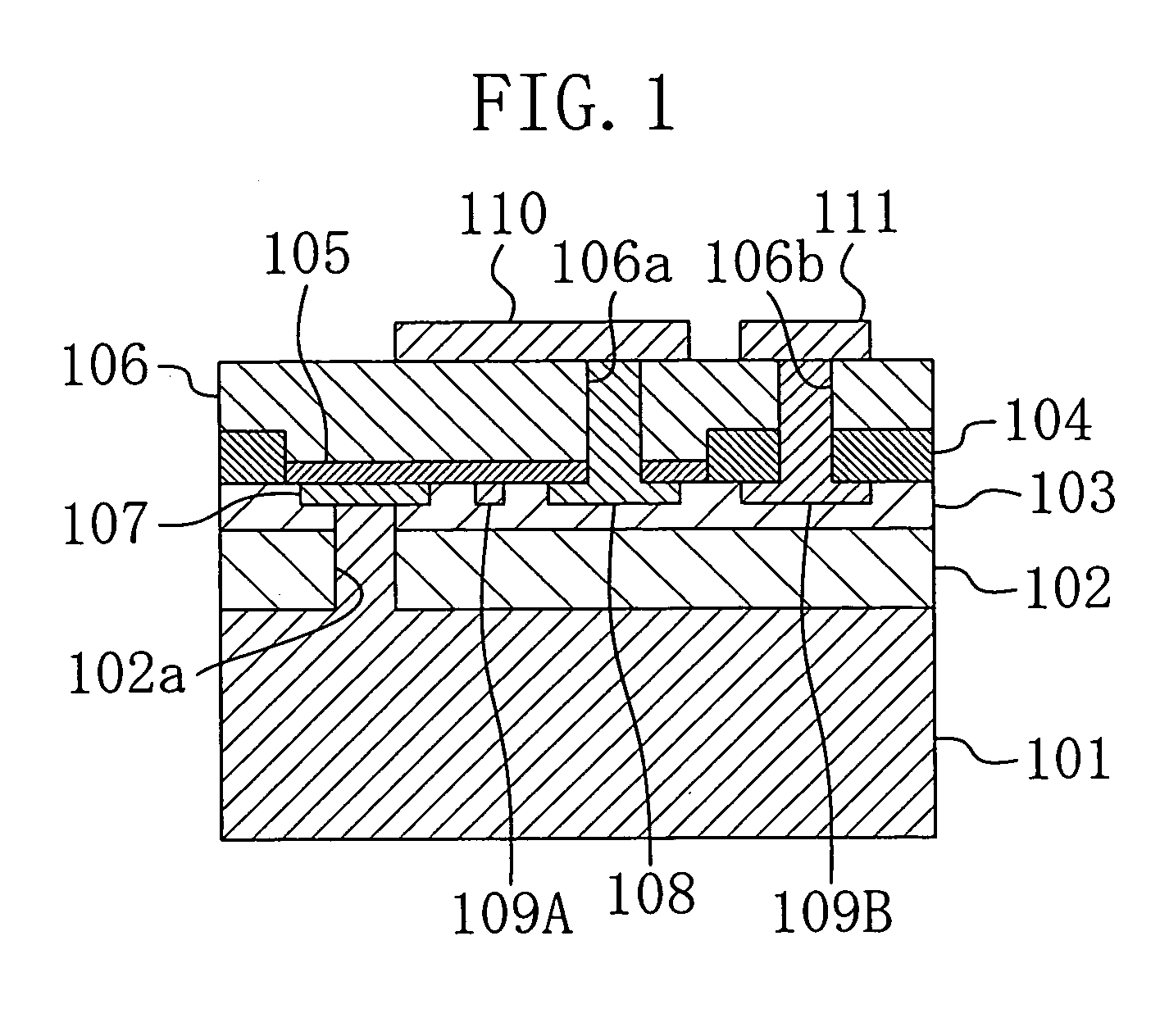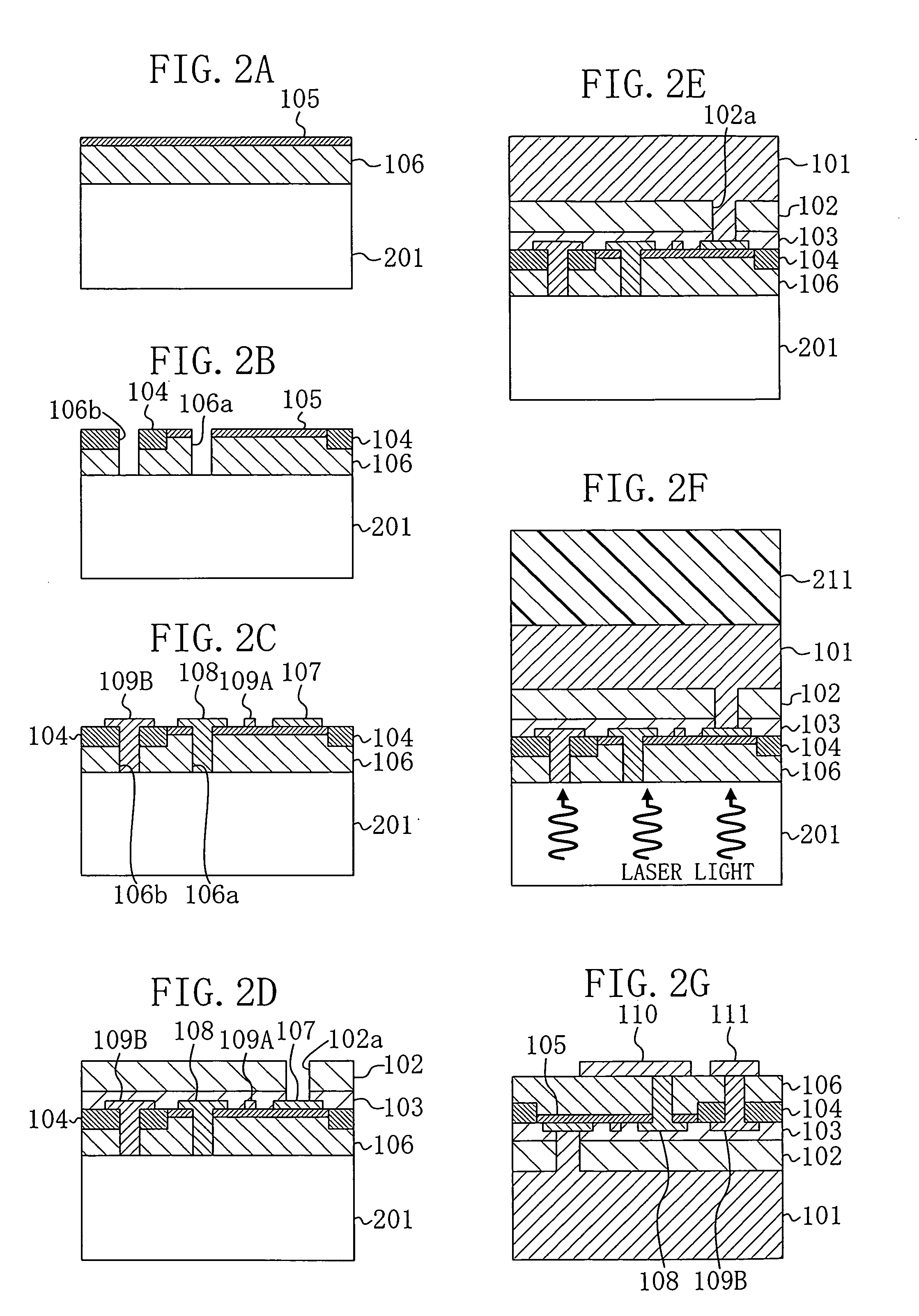Semiconductor integrated circuit device and method for fabricating the same
- Summary
- Abstract
- Description
- Claims
- Application Information
AI Technical Summary
Benefits of technology
Problems solved by technology
Method used
Image
Examples
embodiment 1
[0044] A first embodiment of the present invention will be described with reference to the drawings.
[0045]FIG. 1 is a cross-sectional view of a semiconductor integrated circuit device according to a first embodiment of the present invention. As illustrated in FIG. 1, an interlayer insulating film 102 made of benzo-cyclo-butene (BCB) with a thickness of about 3 μm, a passivation film 103 made of silicon nitride (SiN), a first semiconductor layer 105 made of n-type AlGaN and a second semiconductor layer 106 made of undoped GaN are sequentially formed on, for example, a source line 101 made of gold (Au) plating with a thickness of 10 μm or more.
[0046] A gate electrode 109A and source and drain electrodes 107 and 108 formed at both sides of the gate electrode 109A with spacing are formed on the lower face of the first semiconductor layer 105.
[0047] A first through hole 102a in which the source electrode 107 is exposed is formed in the interlayer insulating film 102 and the passivatio...
embodiment 2
[0066] Hereinafter, a second embodiment of the present invention will be described with reference to the drawings.
[0067]FIG. 3 illustrates a cross-sectional structure of a semiconductor integrated circuit device according to the second embodiment. As illustrated in FIG. 3, a passivation film 303 made of silicon nitride (SiN) is bonded to a supporting substrate 301 made of, for example, semi-insulating silicon carbide (SiC) with a thickness of 150 μm or more with an electrode pattern 302 of gold (Au) / gold tin (AuSn) / gold (Au), a drain line 312 and a gate line 313 sandwiched therebetween.
[0068] A first semiconductor layer 304 made of n-type AlGaN, a second semiconductor layer 305 made of undoped GaN, a buffer layer 306 made of AlN, an interlayer insulating film 314 made of benzo-cyclo-butene (BCB) with a thickness of about 3 μm and a source line 311 are sequentially formed on the passivation film 303.
[0069] A gate electrode 309A is formed on the lower face of the first semiconducto...
embodiment 3
[0089] Hereinafter, a third embodiment of the present invention will be described with reference to the drawings.
[0090]FIG. 5 illustrates a cross-sectional structure of a semiconductor integrated circuit device according to the third embodiment. As illustrated in FIG. 5, a first semiconductor layer 502 made of undoped GaN and a second semiconductor layer 503 made of n-type AlGaN are attached to a supporting substrate 501 having a thickness of, for example, 150 μm or more and made of silicon (Si) whose principal surface has a plane orientation of a (100) plane with an electrode pattern 510 made of Au / AuSn / Au and a source line 509 sandwiched therebetween.
[0091] A gate electrode 506A is formed on the second semiconductor layer 503 and a source electrode 504 and a drain electrode 505 are formed at both sides of the gate electrode 506A with spacing on the second semiconductor layer 503.
[0092] A high-resistance region 507 formed to have a high resistance by, for example, selective oxid...
PUM
 Login to View More
Login to View More Abstract
Description
Claims
Application Information
 Login to View More
Login to View More - R&D
- Intellectual Property
- Life Sciences
- Materials
- Tech Scout
- Unparalleled Data Quality
- Higher Quality Content
- 60% Fewer Hallucinations
Browse by: Latest US Patents, China's latest patents, Technical Efficacy Thesaurus, Application Domain, Technology Topic, Popular Technical Reports.
© 2025 PatSnap. All rights reserved.Legal|Privacy policy|Modern Slavery Act Transparency Statement|Sitemap|About US| Contact US: help@patsnap.com



